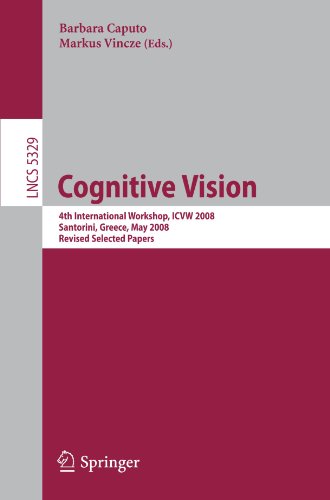

Most ebook files are in PDF format, so you can easily read them using various software such as Foxit Reader or directly on the Google Chrome browser.
Some ebook files are released by publishers in other formats such as .awz, .mobi, .epub, .fb2, etc. You may need to install specific software to read these formats on mobile/PC, such as Calibre.
Please read the tutorial at this link: https://ebookbell.com/faq
We offer FREE conversion to the popular formats you request; however, this may take some time. Therefore, right after payment, please email us, and we will try to provide the service as quickly as possible.
For some exceptional file formats or broken links (if any), please refrain from opening any disputes. Instead, email us first, and we will try to assist within a maximum of 6 hours.
EbookBell Team

0.0
0 reviews
ISBN 10: 3540927808
ISBN 13: 978-3540927808
Author: Markus Vincze
Weareverypleasedtopresenttheproceedingsofthe4thInternationalCognitive Vision Workshop,held as part of the 6th InternationalConference on Computer Vision Systems on Santorini,Greeceduring May12–15,2008.The aim of ICVW 2008 was to document the progress of the relatively young ?eld of cognitive computer vision, bringing together researchers working and interested in this ?eld and giving them a platform to discuss the results of the di?erent European cognitive vision projects as well as international projects in this area. Original research papers were solicited in all aspects of cognitive vision, targeting the following areas in particular: – Memory: The coupling between visual perception, tasks, knowledge and the visualsystemrequiresmemory.Issuesthatareofspecialimportanceforin- grating memory into vision systems include: how to manage representations with limited resources;modelfor attention;integrationofinformationacross representations and time. – Learning and Adaptation: A system whose goal is that of interacting with the real world must be capable of learning from experience and adapting to unexpected changes. Also, there is a need for integration of multiple - sual features to enable generation of stable hypotheses, and for methods for combination of cues in the presence of uncertainty. – Categorization: Research has in particular focused on recall of speci?c - ject instances, events and actions. Whereas recently some progress has been achieved in systems that allow limited recognition of object classes, events and scenes across visual appearance, new methods are needed to enable abstractions and e?ective categorization across variations in color, surface markings, geometry, temporal scenes, context and tasks.
4th international webinar on cognitive and behavioral neurosciences
cognitive vision training
cognition workshop
cognition the thinking animal 4th edition pdf free
4e cognitive science framework
Tags: Markus Vincze, Cognitive Vision